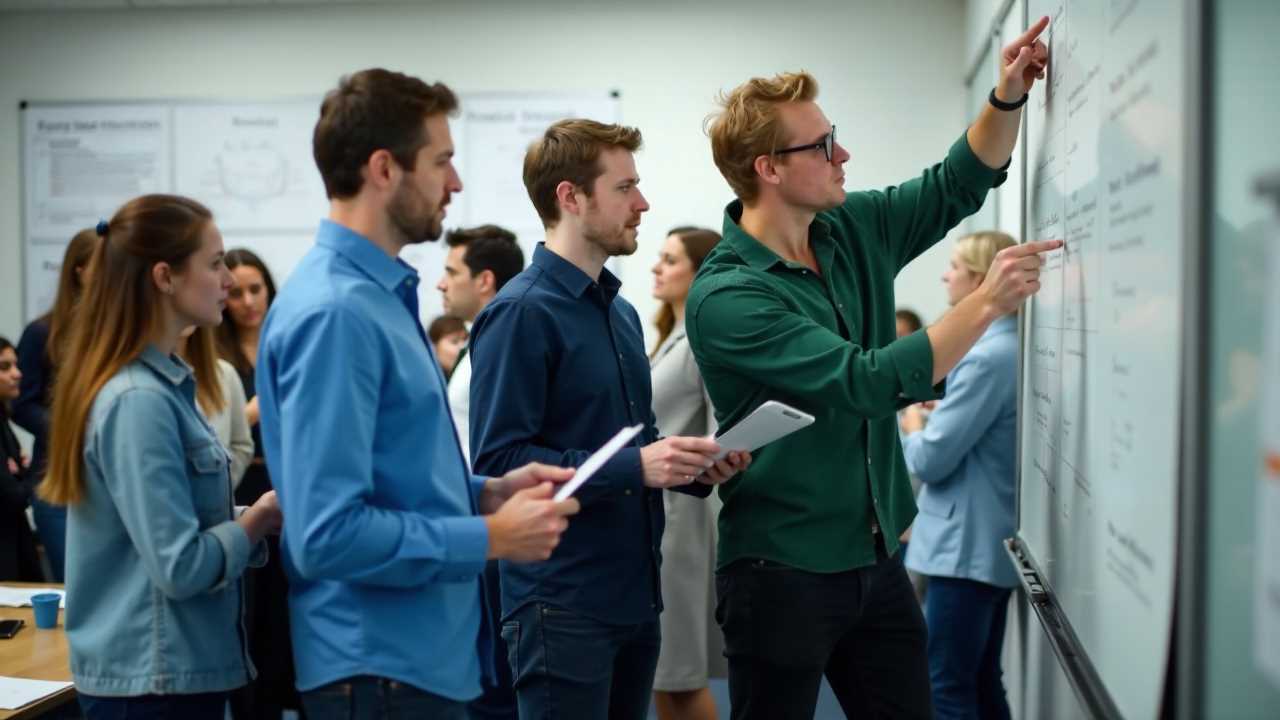
Understanding the Importance of Critical Thinking in Middle School Education
In the realm of middle school education, fostering critical thinking is paramount. As students transition from elementary to middle school, they encounter more complex subjects that require deeper understanding and analytical skills. This age group, typically ranging from 11 to 14 years old, is at a pivotal stage in their cognitive development. They are not just absorbing information; they are learning to question, analyze, and apply knowledge in real-world contexts.
Critical thinking exercises serve as a powerful tool to enhance these skills. By engaging in activities that promote problem-solving, reasoning, and decision-making, students can develop a robust framework for thinking critically about various subjects. This article explores effective exercises designed specifically for this age group, emphasizing the role of inquiry-based learning in cultivating these essential skills.
Effective Critical Thinking Exercises for 11-14 Year Olds
1. Debate and Discussion Activities
Engaging students in structured debates on relevant topics encourages them to articulate their thoughts clearly and defend their positions. This exercise not only enhances analytical skills but also fosters reasoning activities. Students must research their topics, consider multiple viewpoints, and construct logical arguments.
For instance, a debate on environmental issues can prompt students to explore various aspects such as sustainability, economics, and ethics. This multifaceted approach encourages them to think critically about the implications of their arguments and the validity of opposing views.
2. Problem-Based Learning Scenarios
Presenting students with real-world problems encourages them to apply their knowledge in practical situations. In a problem-based learning environment, students work collaboratively to identify solutions to complex issues.
For example, a scenario involving a community issue, such as traffic congestion or waste management, can stimulate discussion and analysis. Students can brainstorm potential solutions, evaluate their feasibility, and present their findings. This exercise not only hones their problem-solving skills but also enhances their ability to work as a team and make informed decisions.
3. Inquiry-Based Learning Projects
Inquiry-based learning is a dynamic approach that encourages students to ask questions, conduct research, and explore topics in depth. By allowing students to choose their subjects of interest, they become more invested in their learning process.
For instance, a project on local history can prompt students to investigate primary sources, conduct interviews, and analyze historical events. This hands-on approach not only develops their research skills but also fosters a sense of curiosity and a desire for knowledge.
4. Critical Reading and Analysis
Incorporating critical reading exercises into the curriculum can significantly enhance students' analytical skills. Assigning texts that challenge their thinking and require them to analyze the author's intent, perspective, and argument structure can be highly beneficial.
After reading, students can engage in discussions or write reflective essays that critique the material. This process encourages them to think critically about what they read, fostering a deeper understanding of the content and its implications.
5. Role-Playing and Simulations
Role-playing exercises allow students to step into different perspectives, enhancing their decision-making and problem-solving abilities. By simulating real-life situations, students can practice critical thinking in a safe environment.
For example, a simulation of a town hall meeting can help students understand civic engagement and the importance of community involvement. They can take on roles as citizens, council members, or experts, debating issues and proposing solutions. This interactive approach not only makes learning enjoyable but also reinforces the importance of critical thinking in everyday life.
Encouraging a Growth Mindset
To maximize the benefits of these critical thinking exercises, it is essential to cultivate a growth mindset among students. Encouraging them to view challenges as opportunities for growth fosters resilience and a willingness to engage in complex problem-solving.
Teachers can model this mindset by sharing their own experiences with failure and the lessons learned from those experiences. By creating a classroom environment that celebrates effort and perseverance, students are more likely to embrace critical thinking as a valuable skill set.
Integrating Technology to Enhance Learning
Incorporating technology into critical thinking exercises can further enrich the learning experience. Online platforms and educational tools can facilitate collaboration, research, and creative expression.
For instance, using digital forums for discussions or collaborative projects allows students to engage with peers beyond their classroom. This exposure to diverse perspectives can enhance their analytical skills and broaden their understanding of complex issues.
Assessment and Reflection
To ensure the effectiveness of critical thinking exercises, regular assessment and reflection are necessary. Teachers can implement various assessment methods, such as peer evaluations, self-assessments, and project presentations, to gauge students' progress.
Encouraging students to reflect on their learning experiences helps them identify areas for improvement and reinforces the value of critical thinking. Reflection can take the form of journals, discussions, or presentations, allowing students to articulate their thought processes and learning outcomes.
Incorporating critical thinking exercises into the curriculum for 11-14 year olds is vital for developing essential skills that will serve them throughout their academic and personal lives. By focusing on analytical skills, problem-solving, reasoning activities, and decision-making, educators can create a dynamic learning environment that promotes inquiry-based learning and fosters cognitive development.
Through engaging activities, a growth mindset, and the integration of technology, we can empower students to become confident thinkers and effective problem solvers. As they navigate the complexities of the world around them, these skills will be invaluable in shaping their future success.
 Careers in EducationElementary EducationHigh School EducationEducational TechnologyTeaching StrategiesSpecial EducationPrivacy PolicyTerms And Conditions
Careers in EducationElementary EducationHigh School EducationEducational TechnologyTeaching StrategiesSpecial EducationPrivacy PolicyTerms And Conditions
